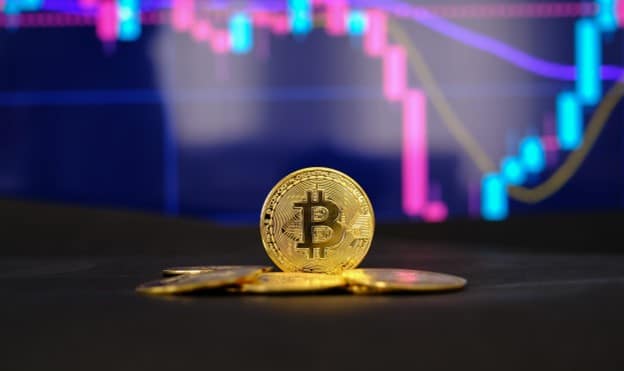
Forecasts have a big impact on how people feel about the market and what they decide to do with their investments. Lately, one prediction’s been getting a ton of buzz: the idea that Bitcoin might need to take a breather before hitting that sweet $150,000 spot. But there’s also some serious chatter about the emerging crypto InQubeta. This AI altcoin’s presale is gaining ground, offering investors interested in AI technology the chance to profit from the sector’s growth.
Bitcoin’s Price Trajectory: A Rollercoaster Ride
Bitcoin has been on a wild ride since the SEC decision on Bitcoin ETF, shooting past $54,000 and sparking some serious optimism about its future. And renowned analyst Michaël van de Poppe is making waves with his bold call of a $150,000 Bitcoin. But he’s also warning about a potential 40% dip before we hit those heights.
According to Poppe, market hype can sometimes make things go a bit crazy, leading to big swings in prices that might not always match up with reality. Even though traders are all hyped about Bitcoin’s recent boom, Poppe’s waving the caution flag about the rollercoaster of emotions driving these trades. His advice for traders and investors is to make a plan that fits your risk tolerance and how long you intend to stay in the market. Short-term players might need to brace for turbulence, but long-term hodlers could see market dips as a chance to swoop in and score lucrative deals, especially when it comes to top crypto coins.
Keep an eye on big events like the release of the Consumer Price Index (CPI) – these can totally shake things up and send Bitcoin prices on a rollercoaster ride. Poppe is cautiously optimistic, knowing that bad news on the economic front could rain on Bitcoin’s parade. But even with all these ups and downs, he’s still seeing the big picture: Bitcoin’s on its way up to $150,000 – it’s just a matter of riding out the bumps along the way.
InQubeta: Pioneering the Intersection of AI and Blockchain
Amidst all the Bitcoin hype, there’s a new buzz brewing in the best crypto investment world—the rise of InQubeta (QUBE). If you’re keen on tapping into the booming AI market while riding the blockchain wave, InQubeta has something pretty intriguing on the table. It’s all about blending AI investment smarts with blockchain crowdfunding, promising both innovation and profit in one neat package.
InQubeta’s presale journey has been nothing short of epic. Their QUBE ERC20 coins started from a humble $0.007 and are now a whopping $0.0245 in just eight stages. That’s not just a spike in price but a sign that investors are seriously buying into InQubeta’s future. With over $10.3 million already raised and more than 831 million tokens out there, InQubeta’s gearing up to revolutionize the AI and blockchain scene.
But here’s the best part: InQubeta (QUBE) isn’t just about throwing around buzzwords. They’re all about giving early QUBE buyers a slice of the action, letting them get in on the ground floor of AI innovation and crypto growth. And with the blockchain ICO platform set to launch QUBE on top-tier exchanges at a price of $0.0308, investors are eyeing some serious returns, especially with the AI sector projected to hit trillion-dollar status by 2030.
InQubeta is also rolling out a staking feature, letting token holders lock in their QUBE tokens and score rewards from a dedicated tax pool. It’s a win-win: you get to play the long game while boosting the platform’s ecosystem, which means more value for you. By tackling key issues in AI fundraising, InQubeta’s not just another good crypto to buy—it’s leading the charge, bridging the gap between AI innovation and blockchain tech.
Conclusion
While Bitcoin’s path remains a rollercoaster, InQubeta shines bright as a beacon of innovation and profit in AI and blockchain. With their presale in Stage 8 and QUBE tokens up for grabs at $0.0245, there’s no better time to dive into InQubeta’s potential.
Ready to join them on this journey and explore the future of AI investment? Swing by their website and hop onto their Twitter community.
This news is republished from another source. You can check the original article here




